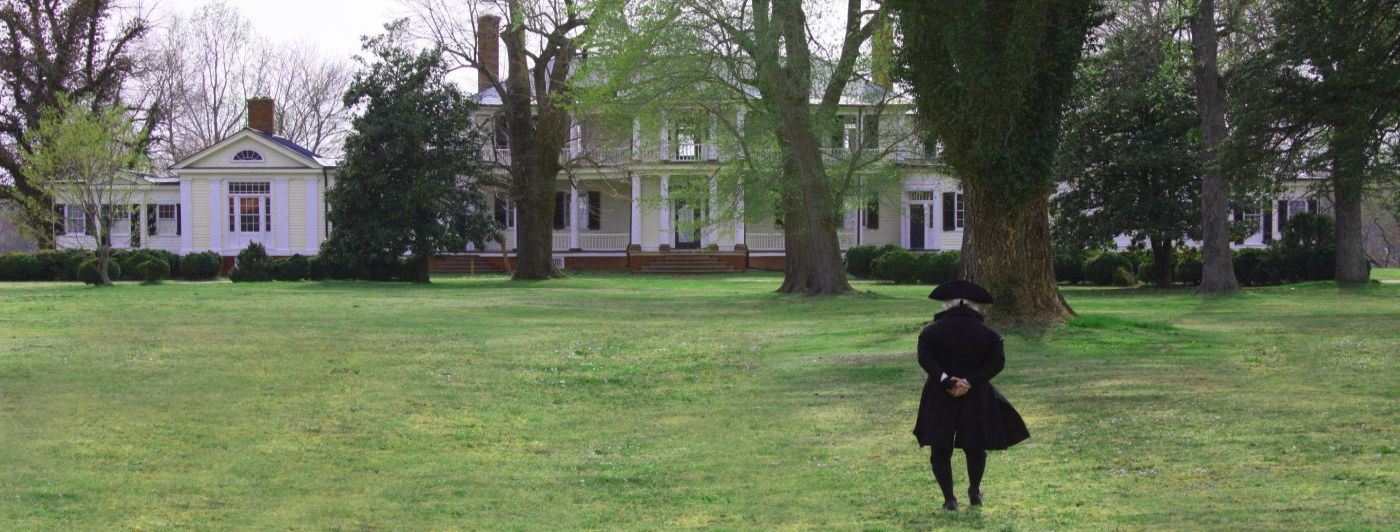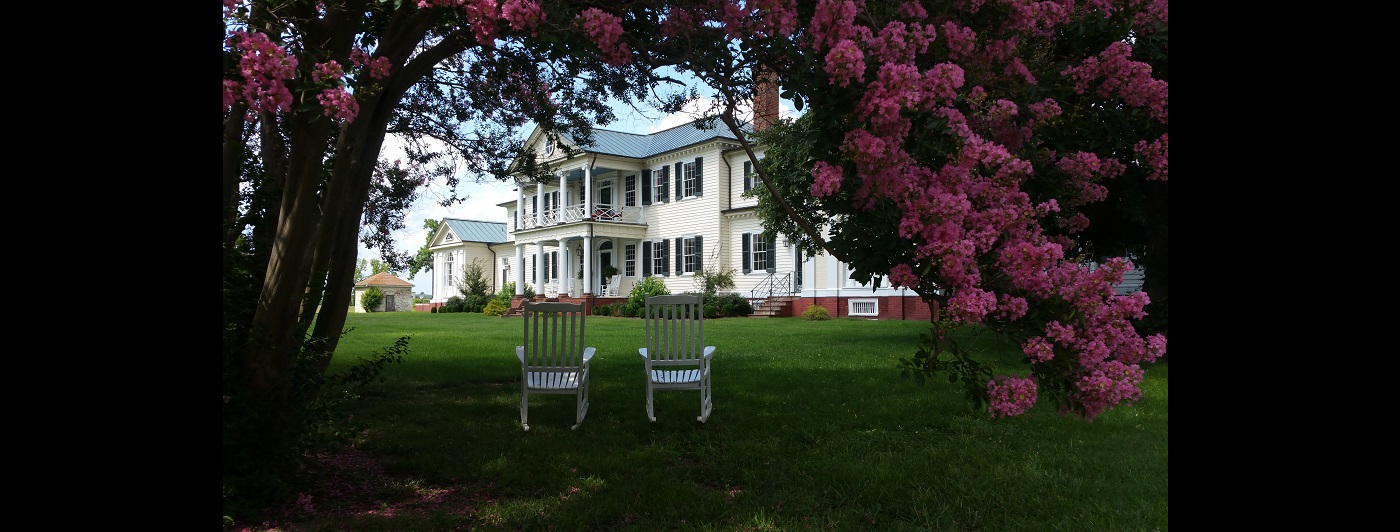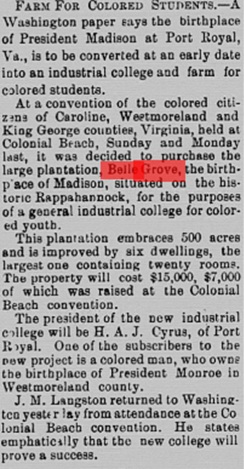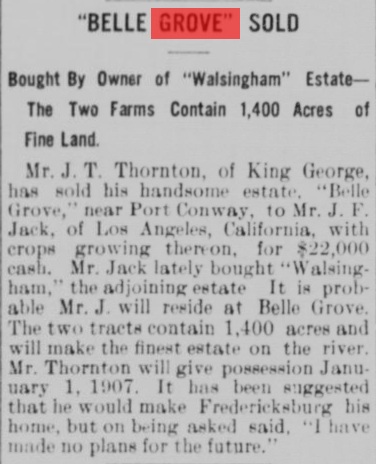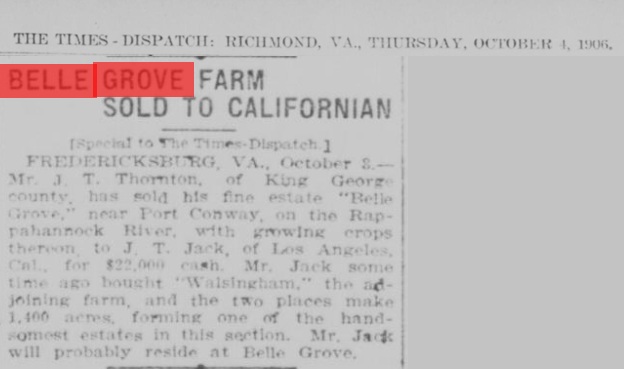Thank God for Newspapers!
In 1893, Susan Turner Hunter, daughter of Carolinus and Susan Turner and her husband Frederick Hunter sold Belle Grove. In looking at the year that Frederick passed, it looks as if he may have been in declining health and wasn’t able to run the plantation as he had. They sold the plantation to John Tayloe Thornton of Port Royal, Virginia.
Now remember I told you in the previous post that these past days had been somewhat of an odyssey? Well, here is the reason. When I started doing the research on John Thornton, I ran into several road blocks. First, there is no information on John on the internet as there had been for previous owners. I had to make educated guesses as to where he may have come from. I got lucky and found some information about some property he owned in Port Royal. So that gave me the connection to Port Royal. Then I used “Find a Grave” and located him, his wife Louise Disney Thornton and their son, John Tayloe Thornton Jr. at St Peter’s Episcopal Church in Port Royal. Now Port Royal is not a large town so I was pretty sure I found him. Then looking at the list of graves at St Peter’s I found who I guessed was his father, Champe Brockenbrough Thornton and his mother Elizabeth Grammar Thornton. Using his father’s name, I was then able to find his father and mother along with his brothers and sisters. But these still didn’t give me the connection to Belle Grove that I needed to confirm it was the right person.
So then I started looking at local newspapers. I found a link for archive newspapers and found several articles on John Thornton. It was through these articles, I was able to put together the connection and about his time at Belle Grove. All I can say is Thank God for newspapers!
My first article comes from the Alexandria Gazette dated July 3, 1893. It talks about a gentleman from Fredericksburg who relates that John Tayloe Thornton of Port Royal has purchased Belle Grove. It states that he is a wealthy bachelor. This seems to be correct. I have found information that his father, Champe B. Thornton was a wealthy merchant from Port Royal. I also found that John owned several lots in the town of Port Royal too. It goes on to say that John Thornton has paid $9,000 for Belle Grove which was $20 an acre. This means that he purchased 450 arces. Now this is the first time I have seen the arces change from the 700 that was sold to John Hipkins. I am not sure who had the other 250 arces. I did find out that the Robb Family, Anna Turner Robb and her family had a home on the back section of the 700 acres. It could have been that she received it from her father and mother at the time of her fathers death.
But here is the best part of this article. It seems that John Thornton purchased Belle Grove in order to convince a young lady to marry him. It says in the article that this young lady told him that he had to purchase Belle Grove or she wouldn’t marry him. So he purchased Belle Grove. Question is, did she marry him?
A second article appears in the Times from Richmond dated July 6, 1893 confirming that John Thornton purchased Belle Grove Plantation. It doesn’t mention the young lady, but it does mention that this plantation is where President James Madison was born.
Now you may remember this photograph from 1894. I found it early on in my research. But for several months I was under the assumption that the person on the front porch was an African-American in a white dress. I assumed it could have been a former slave of the plantation. It wasn’t until just last month, while we were viewing the original glass plate photo that I realized that it wasn’t an African-American woman, but a man in a white suit sitting down next to a young boy in a dark suit! Looking at the dates of the photo, this could only be one person, John Tayloe Thornton! I am not sure who the young boy is. At the time of the photo, he was not married and didn’t have a younger brother. Could it be a nephew or even a child of the young lady he is wanting to marry? Either way, you have to note the wonderful bow tie he is wearing as well as the fact that his hair is parted in the middle and slicked down. And if you look close, the young boy looks to have knickers on! Very handsome indeed!
Our next article comes from the Alexandria Gazette dated July 28, 1897. Seems that the young lady decided not to marry dear John Thornton. So now he is stuck with this huge plantation. So it looks as if he is selling Belle Grove. But what a surprise to find out who John is selling it to and what they plan to do with Belle Grove. In the article, it states that another Washington paper has claimed that Belle Grove has been sold for $15,000 for 500 arces of land. Belle Grove is to become an Industrial College and Farm for Colored Students.
It states that Belle Grove has six dwellings on the property, one with twenty rooms. I would assume that would be the mansion. There seemed to have been a convention of some sort in Colonial Beach, which is just 20 minutes from Belle Grove. At this convention, $7,000 was raised of the $15,000. It also states that one of the people working on the project is a “colored man” that owns President James Monroe’s birthplace. This is located just outside of Colonial Beach. It names the new President for this Industrial College as H.A.J. Cyrus of Port Royal. It also mentions J.M. Langston who either lives or works in Washington D.C. I am assuming that he might be a representative or senator.
Just a couple months later the Alexandria Gazette dated September 16, 1897 states again the John Thornton has sold Belle Grove to Charles W. Hillers of West Pittston, PA for $15,000. But here is another article from the Alexandria Gazette dated March 26, 1989 that states Charles W. Hillers Of Pittston, PA has purchased Belle Grove from John Thornton for $13,000! Somewhere along the line, $2,00o got knocked off. Could this be a sign that this group purchasing Belle Grove is having issues raising the remain balance?
Well here is our answer! This article from the Alexandria Gazette dated April 1, 1899, over a year later, states that a lawsuit has been ongoing over the sale of Belle Grove. It seems that a judgement in the case between John Thornton and Charles Hillers (Hellers) has been passed down. In the case John Thornton states that the terms of the sale had not been met. The judgement awarded Belle Grove back to John Thornton.
So after the lawsuit and John Thornton receiving Belle Grove back, the history goes a little dark on Belle Grove. Two years would pass before we again hear that John Thornton has moved into Belle Grove with his family! I have not been able to find a date of marriage for John and his bride, Louise Disney Thornton. I don’t think she was the young lady that he purchased Belle Grove for to start with. I think she came along during the two years of no history on Belle Grove.
This article and a second from the Times in Richmond dated May 15th and May 23rd of 1901 also gives us a little detail of the mansion at Belle Grove. It talks about how splendid the house is. It states that it has marble mantels, large porches and beautifully carved brown stone steps. The article talks of it costing $20,000. I am not sure if they are thinking the steps cost $20,000 or the whole property. This is a little confusing because the steps were there when he purchased Belle Grove in 1893. You can see them in the 1894 photo. And I don’t think that John Thornton had to purchase Belle Grove again since he had already won it back in 1899. So that part is a little unclear. Unless John sold it after the lawsuit and had to purchase it back. I don’t have any information on that, but you never know.
The second article also talks about the fact that John Wilkes Booth died just two mile away from Belle Grove.
I don’t have an article on this, but I do know that John and Louise’s first child, Elizabeth Grammer Thornton was born in August 14, 1901. She was named after his mother. Grammer was his mother’s maiden name. Just three months later we would see our next article from the Free Lance Star in Fredericksburg dated December 03, 1901. It tells about an event on November 28, 1901 at Belle Grove. Elizabeth Grammer Thornton was christened. This is the first time we have found a christening at Belle Grove. It states that Rev. Turner performed the ceremony. Could this be one of the relatives of Carolinus and Susan Turner? Most likely yes. I just don’t know which one.
The ceremony was witness by a large group of friends from Port Royal and King George. It states the house was decorated with holly and chrysanthemums. It also states that refreshments were served.
Now you know that John was a wealthy man when you find an article stating that he and his family just went to Fredericksburg! This article is from the Free Lance Star of Fredericksburg dated January 23, 1902. Could they have been there to show off their new daughter? Or maybe a little shopping.
The next article from the Free Lance Star of Fredericksburg dated June 7, 1902 gaves us a look at the farm and some of what they had on the farm. Here they are looking to sell ten good Milch Cows. Okay, I am not a person who knew what a “Milch Cow” was, so I had to look it up. A Milch Cow is a cow that is kept for milking. A dairy cow. The image I got was that of a cow you see in the Chick-fil-a commericals. These ten cows are said to be gentle and kind. They are also looking to sell five good horses from three to nine years old.
They are also looking to purchase thirty steers and heifers. Could they been thinking of starting a dairy farm?
There is no article for this next event for the Thorntons. On April 12, 1903, John Tayloe Thornton Jr. was born to John Tayloe Thornton and his wife Louise. But this joy wouldn’t last very long. Just two months later they would lose baby John on June 23, 1903.
After the sad loss of baby John, we don’t hear again from Belle Grove until an article from The Free Lance Star of Fredericksburg dated May 10, 1904 appeared. This article talks of visitors to Belle Grove. Two visitors from Fredericksburg, Mrs. Frances Tabb Newman and her niece Miss Parker Herndon had been visiting with the Thorntons at Belle Grove and had just returned home.
It talked of a tea party that the Thornton’s gave at Belle Grove for several of their friends. They served refreshments in the “handsome and spacious” parlors. How cool to know that we will be following tradition with serving tea and conducting tea parties at Belle Grove too! After the tea party, it states that the young people played a game of tennis! Do I see a grass tennis court coming to Belle Grove in the future? Could be!
After years of use, every home needs a little improving. In the next article from the Free Lance Star of Fredericksburg June 23, 1904 talks of improvements that were done at Belle Grove. It tells about painters, slaters and tinners working on this beautiful home. It is the first time we see that the mansion is painted a cream yellow with white trim and green blinds. Surprising this is the current color of the mansion! During the restoration from 1997 to 2003, the mansion had been taken from the green exterior walls back to this color combination. Could it be this history that they were bring back to the mansion?
Also in this article we get another look at the farm and its working. It talks about ten men working the wheat fields cutting wheat. He is also selling corn at 65 cents from the barn.
At the end of this article we get a view of Port Conway that we have never seen. We have known of the Ferry House and the Post Office from pictures. We have also known that Port Conway had twenty lots with one being a church. But this is the first time we have found out that Port Conway had a hotel! Hotel Harriman is spoken of and is said to be doing well. They are expecting to built a new hotel soon. And what is this? Port Conway had long distance phone! And a daily steamboat. This steamboat seems to be bringing outside visitors to the area who are looking to move into some of the farms. What’s this? Two of these outsiders came to see Belle Grove! Oh no! Are we looking to see Belle Grove again? I am with this writer who states “If I owned Belle Grove, I would never sell it”.
In what I would called a “gossip column” of the Free Lance Star of Fredericksburg dated August 13, 1904 we see Arthur Thornton and his family visiting Belle Grove. Arthur is John Thornton’s youngest brother.
This next article has to have one the prettiest headlines. But sadly the news isn’t as nice. This piece from the Free Lance Star of Fredericksburg dated September 29, 1904 tells us that a “colored man” named John Smith broke into Belle Grove and stole a gold watch. For his crime, John Smith will spend six months in jail. This is the first crime we have confirmed at the plantation.
You know you are big time when your Christmas celebration makes not just one, but two papers! The first article is from The Daily Star dated January 1, 1906. It talks about how the Thorntons and little Elizabeth received a visit from Santa Claus at Belle Grove with several friends. What a wonderful insight of little Elizabeth answering the door bell (the first time we have heard of a door bell at Belle Grove) and greeting Santa. It tells us that she ushered him into the dining room where he greets other guests and children. From there they went to the parlor where a large tree was decorated with lights (most likely candles!) and gifts were presented to each of the younger children along with a cornucopia of candy. The older children enjoyed refreshments.
Later the children would play a game of “Snapping Dragon”. Now here is what I found out about this game. According to Wikipedi:
“Snap-dragon was a parlor game popular from about the 16th to 19th centuries. It was played during the winter, particularly on Christmas Eve. Brandy was heated and placed in a wide shallow bowl; raisins were placed in the brandy which was then set alight. Typically, lights were extinguished or dimmed to increase the eerie effect of the blue flames playing across the liquor. The aim of the game was to pluck the raisins out of the burning brandy and eat them, at the risk of being burnt. Samuel Johnson’s Dictionary of the English Language(1755) describes it as “a play in which they catch raisins out of burning brandy and, extinguishing them by closing the mouth, eat them”.
According to Robert Chambers’ Book of Days (1879) the game was accompanied by a chant:
- Here he comes with flaming bowl,
- Don’t he mean to take his toll,
- Snip! Snap! Dragon!
- Take care you don’t take too much,
- Be not greedy in your clutch,
- Snip! Snap! Dragon!
- With his blue and lapping tongue
- Many of you will be stung,
- Snip! Snap! Dragon!
- For he snaps at all that comes
- Snatching at his feast of plums,
- Snip! Snap! Dragon!
- But Old Christmas makes him come,
- Though he looks so fee! fa! fum!
- Snip! Snap! Dragon!
- Don’t ‘ee fear him but be bold —
- Out he goes his flames are cold,
- Snip! Snap! Dragon!”
- The house is also decorated in holly and cedar. I bet that smelled wonderful! Now we have an idea of how to decorate for next Christmas! Anyone up for a game of “Snapping Dragon”?
There isn’t an article for this event. On August 6, 1906, Louise Beatrice Thornton was born at Belle Grove. She would be the last of the Thornton Family to be born at Belle Grove.
In an article from the Free Lance Star of Fredericksburg dated October 4, 1906, we learn that the Thornton Family’s time at Belle Grove has come to an end. John Thornton would sell Belle Grove to Mr. J.F. Jack of Los Angeles, California. Mr. Jack already owns Walsingham, the plantation just next door. In the time of the Turners, Walsingham was owned by George Turner while Carolinus Turner owned Belle Grove. George was Carolinus’s cousin. By combining the two plantation, there would be 1,400 acres of farm land.
Mr. Jack will not take Belle Grove until January, 1907. He would live at Belle Grove in the mansion. Walsingham had lost it’s beautiful home years before.
In the second article from The Times-Dispatch of Richmond dated October 4, 1906 we find out that Mr. Jack purchased Belle Grove for $22,000. Not a bad profit for John Thornton of $13,000.
John Thornton would own Belle Grove for just thirteen years. In that time he would get married, have three children, lose one as an infant and set himself up as a prominent member of the community. He would improve the mansion giving us the warm cream yellow walls with white trim and green shutters. He would also give us the oldest known photo of Belle Grove and the first photo of an owner as well.
Best of all, through the newspapers of the time, we have had an opportunity to view a little of what life was like for a family at Belle Grove.



